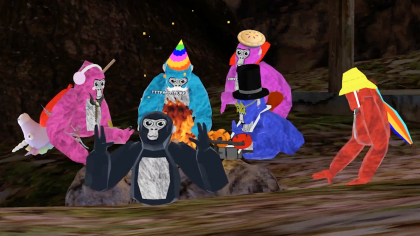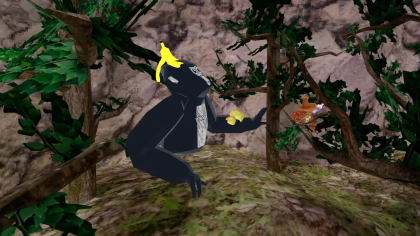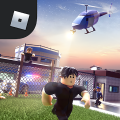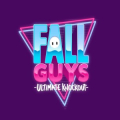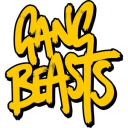Gorilla Tag
When I first stepped into the virtual arena of Gorilla Tag, I felt immediately transported to a world where physics, agility, and an unconventional movement system reigned supreme. As someone who enjoys immersive VR experiences, I was excited by the idea of embodying a nimble primate whose only means of locomotion relied entirely on the movement of its arms. The introduction to the game was both startling and exhilarating, as I quickly realized that every motion in the real world translated into a dynamic leap, swing, or dash within the environment. My initial moments were filled with a mix of curiosity and mild disorientation as I adjusted to the unique mechanics that set Gorilla Tag apart from traditional VR titles.
Immersive Movement Mechanics
The core of Gorilla Tag lies in its innovative locomotion system. In my experience, the absence of conventional walking or teleportation mechanics compelled me to adapt and learn a system where my arms played a central role. I found that each push and pull not only propelled my in-game avatar but also provided a striking sense of physical involvement. The game’s reliance on natural arm swings resulted in a more intense workout than many other VR titles. Every climb, leap, and branch-to-branch glide demanded precise timing and coordination, thus contributing to an immersive experience where my sense of balance and spatial awareness was continually challenged and refined.
Dynamic Physics and Environmental Interaction
One aspect that immediately impressed me was the realistic application of physics within the game world. The way my avatar interacted with surfaces, branches, and obstacles was meticulously designed. I marveled at how every branch and platform responded naturally in accordance with my movements. As I navigated through diverse terrains, the dynamic physics engine provided a gameplay experience that was both unpredictable and engaging. This element added a refreshing layer of realism, making each swing and jump feel like a true test of agility and timing.
An Aesthetic That Strikes a Chord
Aesthetically, Gorilla Tag offers a minimalist yet distinct visual style that resonates well with its gameplay. Embracing a clean and almost abstract environment, the graphics seamlessly blend simplicity with functionality. I appreciated the clarity of the visuals, which ensured that I could focus on the game’s mechanics without being distracted by overly complex textures or excessive details. The subtle color palettes and the design of the environments worked together to create an ambiance that felt both inviting and challenging, striking a balance between playful cheerfulness and competitive intensity.
Exploring Varied Gameplay Modes
As I further delved into Gorilla Tag, I discovered that the game offers a variety of modes that cater to different playstyles and preferences. From fast-paced chase scenarios to more contemplative free-roam sessions, each mode provided a different flavor of fun. I particularly enjoyed the pursuit mode, where the adrenaline-filled chase allowed me to feel the thrill of the chase while maneuvering through intricate layouts. The free-roam mode, on the other hand, enabled me to take my time exploring every nook and cranny of the environment, uncovering hidden pathways and secrets that the developers cleverly embedded throughout the map.
Social Interactions and Community Vibes
Another core element of my experience was the vibrant social aspect of Gorilla Tag. Playing in this virtual space provided opportunities to interact with a community of enthusiastic players, each bringing their unique style and flair to the game. I quickly found that these interactions enhanced the overall quality of the gameplay. Engaging in spontaneous races, cooperative challenges, and even casual banter with other players added layers of enjoyment that extended beyond the game’s mechanics. This dynamic, player-driven network made each session feel fresh and unpredictable while fostering a sense of camaraderie among the participants.
Physical Engagement and Exercise Benefits
What truly sets Gorilla Tag apart is how it subtly combines gaming with physical exercise. In my experience, the game naturally encourages me to move in ways that I had not anticipated when I initially donned my VR headset. Each session left me with a pleasant sense of exertion that is typically reserved for a light workout. I particularly noticed improvements in my core balance and upper body strength, a welcome side benefit as I navigated the various obstacles. The fluid overhead and lateral movements required to succeed in the game not only provided an adrenaline rush but also contributed to a healthier lifestyle, encouraging an active approach in a virtual setting.
Challenging Puzzles and Strategic Movement
Beyond the raw physicality, Gorilla Tag offers an intriguing layer of strategy through puzzle-like level designs. I found that certain sections of the game required not only physical agility but also a keen sense of strategy to overcome obstacles. There were moments when I had to plan my movements several steps ahead, balancing risk and reward as I navigated complex mazes of branches and ledges. This integration of strategic thinking added depth to my overall experience, as it challenged me to think both physically and mentally in order to progress. It felt like a dance between instinct and intellect, making each successful maneuver all the more satisfying.
Sound Design and Immersive Audio Experience
A crucial aspect of the overall immersion in Gorilla Tag was its sound design. From the subtle rustling of leaves to the echo of my footsteps on various surfaces, the auditory feedback was finely tuned to complement the visual and physical experience. I was particularly impressed by how the audio cues not only added to the atmospheric tension but also served practical purposes. Listening for the distinct sounds of other players or environmental hazards became an integral part of my strategy, enhancing both the enjoyment and complexity of each round. The coordinated soundscapes contributed significantly to the overall sense of presence, ensuring that my immersion was complete from head to toe.
Customizable Playstyles and In-Game Personalization
One of the aspects that I found particularly appealing about Gorilla Tag was the degree of customization it allowed. The game provided me with options to tailor my experience in a way that best fitted my individual playstyle. Whether I was focusing on maximizing my speed or honing my acrobatic skills, there were settings and in-game elements that supported my preferred approach. This flexibility extended to avatars and virtual spaces where I could experiment with different styles of movement and aesthetic upgrades. Such features not only kept the gameplay fresh but also empowered me to express my personality within the game, creating a unique identity that resonated with the overall vibe of Gorilla Tag.
Learning Curve and Skill Mastery
Though the concept of using one’s arms as the primary tool for movement can be initially daunting, I found that the learning curve in Gorilla Tag was as rewarding as it was challenging. My early sessions were filled with trial and error, as I strove to coordinate my real-life physics with the virtual momentum of my avatar. Over time, what once felt like a series of clumsy swipes evolved into a smooth and deliberate dance through the game’s environments. Each level I overcame felt like a personal triumph, and the sense of achievement that accompanied mastering a new move kept me coming back for more. The gradual progression from uncertainty to mastery was, for me, one of the most compelling aspects of the game.
Creative Use of Environment and Natural Obstacles
Gorilla Tag’s design philosophy leans heavily on the utilization of natural obstacles and environmental features. In my explorations, I noted that every element in the virtual arenas was carefully placed to encourage creative solutions and varied gameplay approaches. Trees, branches, and rocky outcrops were not merely decorative; they played pivotal roles in shaping how I maneuvered and interacted with the space. In some sections, I had to assess the environment critically before committing to a move, ensuring that I could use the available natural elements to my advantage. This creative use of the surroundings kept every session engaging and introduced a layer of tactical decision-making that continually evolved as I became more familiar with the terrain.
Replay Value and Continuous Freshness
After spending countless hours engrossed in Gorilla Tag, I was pleasantly surprised by its replay value. The simplicity of its core mechanics belied an underlying complexity that beckoned me to return, time and again. Every session in this virtual space felt like a brand new adventure, largely driven by the unpredictable nature of other players and the dynamic environment. The game encouraged exploration, experimentation, and a spirit of healthy competition. I appreciated how the developers managed to strike a balance between a stable, well-thought-out system and the consistent surprises that kept the experience consistently engaging. The unpredictability of each session ensured that boredom was never an issue, and my enthusiasm was maintained over extended periods of play.
Experimentation and Risk-Taking Encouraged
Gorilla Tag fosters an atmosphere where experimentation is highly encouraged. I often found myself venturing into unconventional routes or attempting daring maneuvers that I had never imagined would work in a virtual context. The game’s design incentivizes risk-taking by offering unique rewards—both in terms of in-game achievement and personal satisfaction. Every time I attempted a challenging leap or a complex navigation through a heavily populated area, there was an undeniable thrill in the possibility of success. This freedom to experiment without fear of an overly harsh penalty was refreshing, and it instilled in me a continuous desire to test my limits, refine my techniques, and ultimately excel at the myriad challenges presented within the game.
Reflections on Virtual Adventure and Personal Growth
The experience of playing Gorilla Tag has been far more transformative than I initially anticipated. Stepping into the virtual world not only provided an escape from the routine of everyday life but also acted as a catalyst for personal growth in terms of coordination, spatial awareness, and strategic planning. I have noticed improvements in my real-world agility and a heightened sense of excitement when confronting physical challenges in other aspects of my life. The integration of playful mechanics with elements of real exercise created an environment where each game session felt like a mini-adventure that contributed to building my confidence and physical resolve.
Unexpected Joys and Moments of Pure Exhilaration
There were several moments during my time with Gorilla Tag that filled me with pure exhilaration and unexpected joy. Whether it was the satisfaction of executing a perfectly timed swing or the communal laughter shared with fellow players during a particularly chaotic round, the game delivered countless instances of spontaneous delight. I found that these moments often emerged from the simplest interactions—a well-timed jump, the collaborative effort to navigate a tricky section of the map, or even the visual spectacle of the game’s environment as seen from a high vantage point. Each of these experiences enriched my overall connection to the game and left me eagerly anticipating what the next session would bring.
To download the app, you will get links to the Official Website and/or official digital markets.
